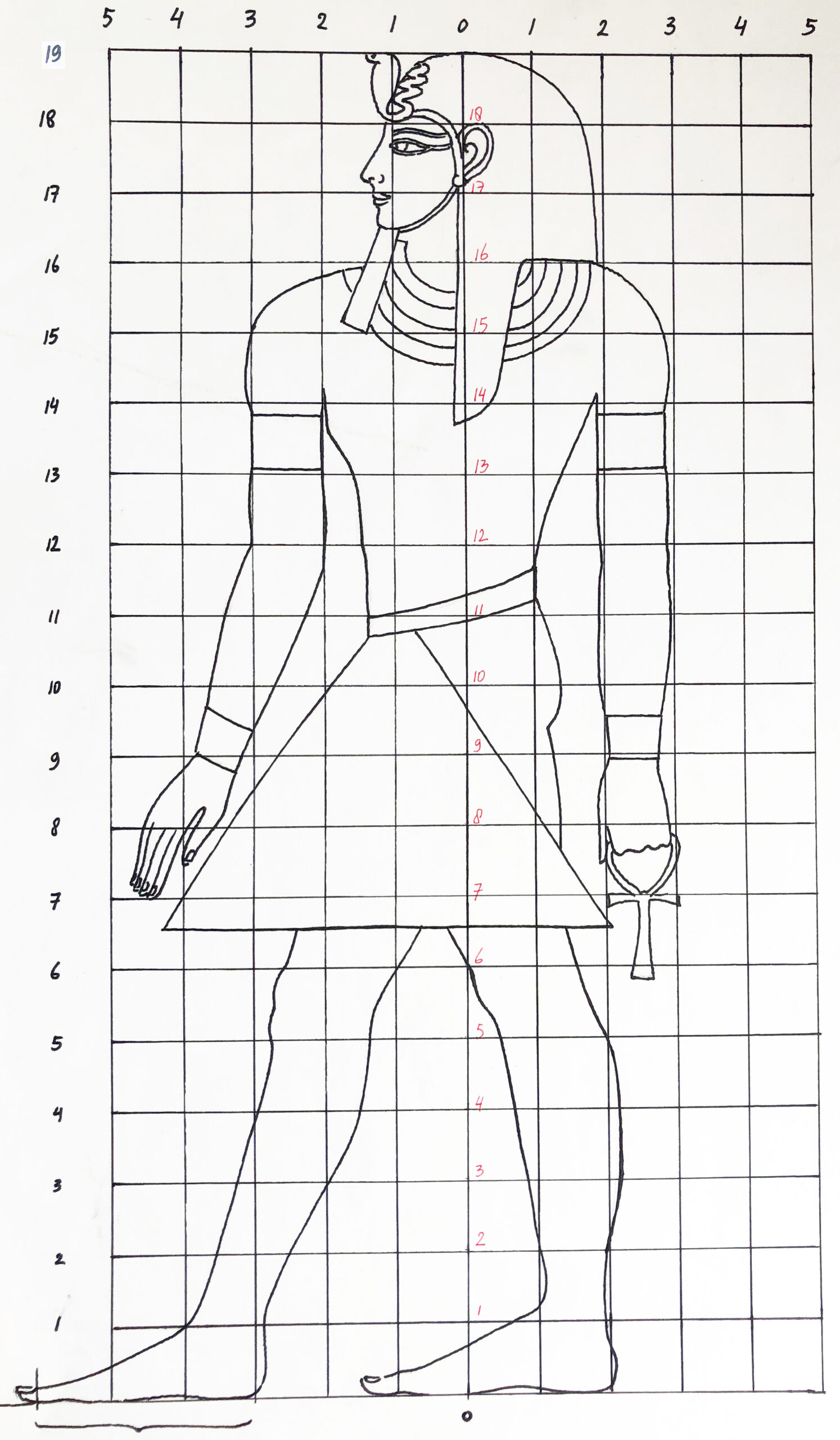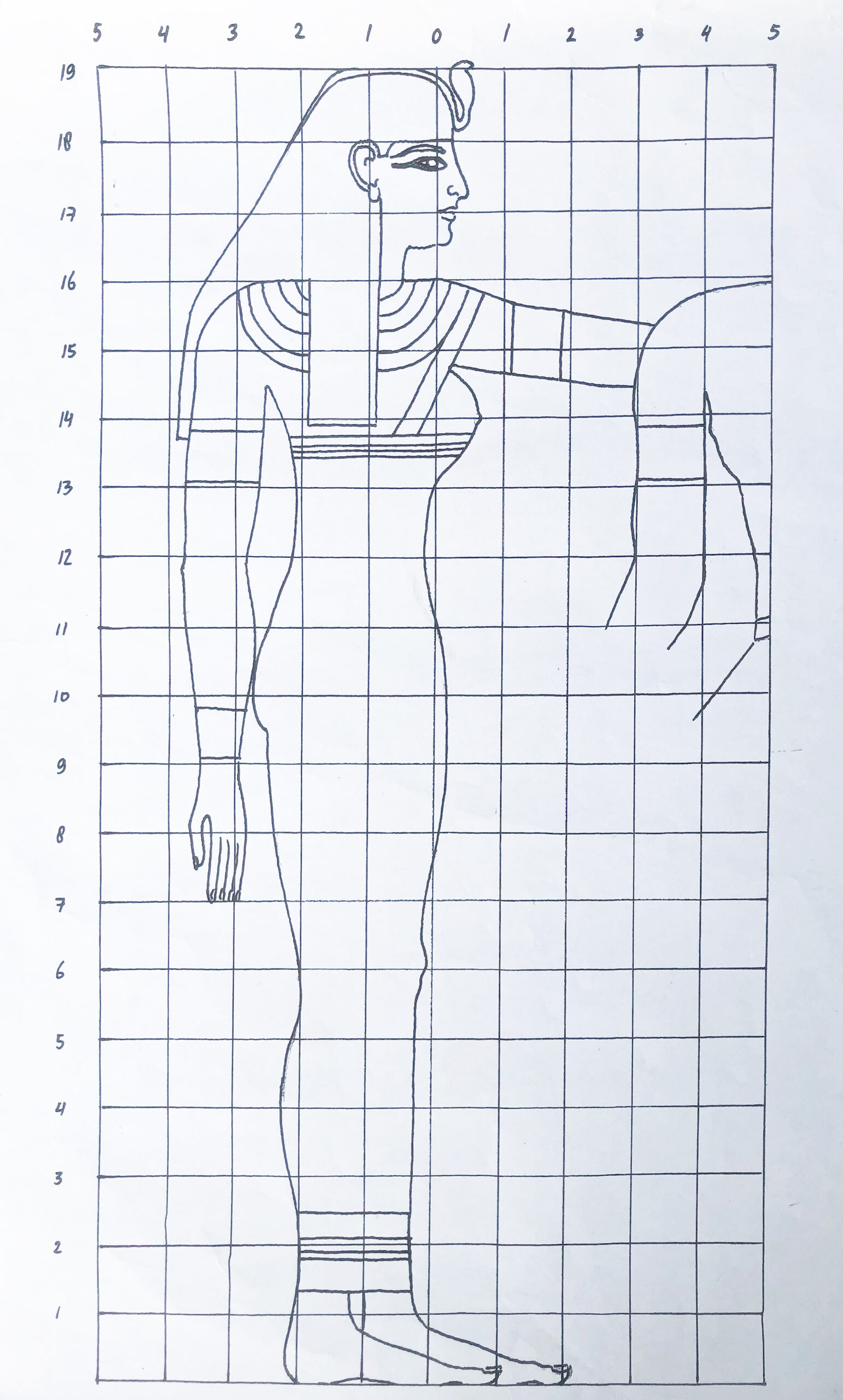Chapter 3 | AN EGYPTIAN PHARAO
Look closely at the way the Egyptian pharaoh is drawn and try to stand for some time into that position yourself. Head to the side, upper body forward and the legs and feet from the sides in the same direction. I will fall over if I try!
Why did those great artists portray their pharaoh so strangely?

The answer has to do with the belief that all body parts had to be depicted as clearly as possible (and without perspective foreshortening), otherwise the pharaoh would not end up properly in the afterlife after his death. For example, the feet are drawn from the side in their full length and both arms are visible. The profile of the head was considered the most characteristic part, with the ears, while the eye is drawn almost from the front. Perhaps the artists used a grid of squares in the preparatory phase to ensure that all sizes and proportions were exactly right. In the image of the pharaoh and his wife, there are 19 squares from top to bottom and 10 from left to right. The foot measures more than three squares and the hand two. This kind of art was not made to hang on the wall at home or to view in a museum, but to decorate the pharaoh’s tomb, sometimes deep underground or somewhere in the middle of a pyramid.


 The wife of the pharao
The wife of the pharaoEXTRA: Draw a pharaoh and/or his wife in that typical pharaoh pose. You can also print out my image(s) and perhaps enlarge them (see Handy Drawing Tips Part 1, Level 1). It’s nice to draw this large and color it in. If you agree on the dimensions with someone else, you might be able to display the pharaoh and his wife side by side.